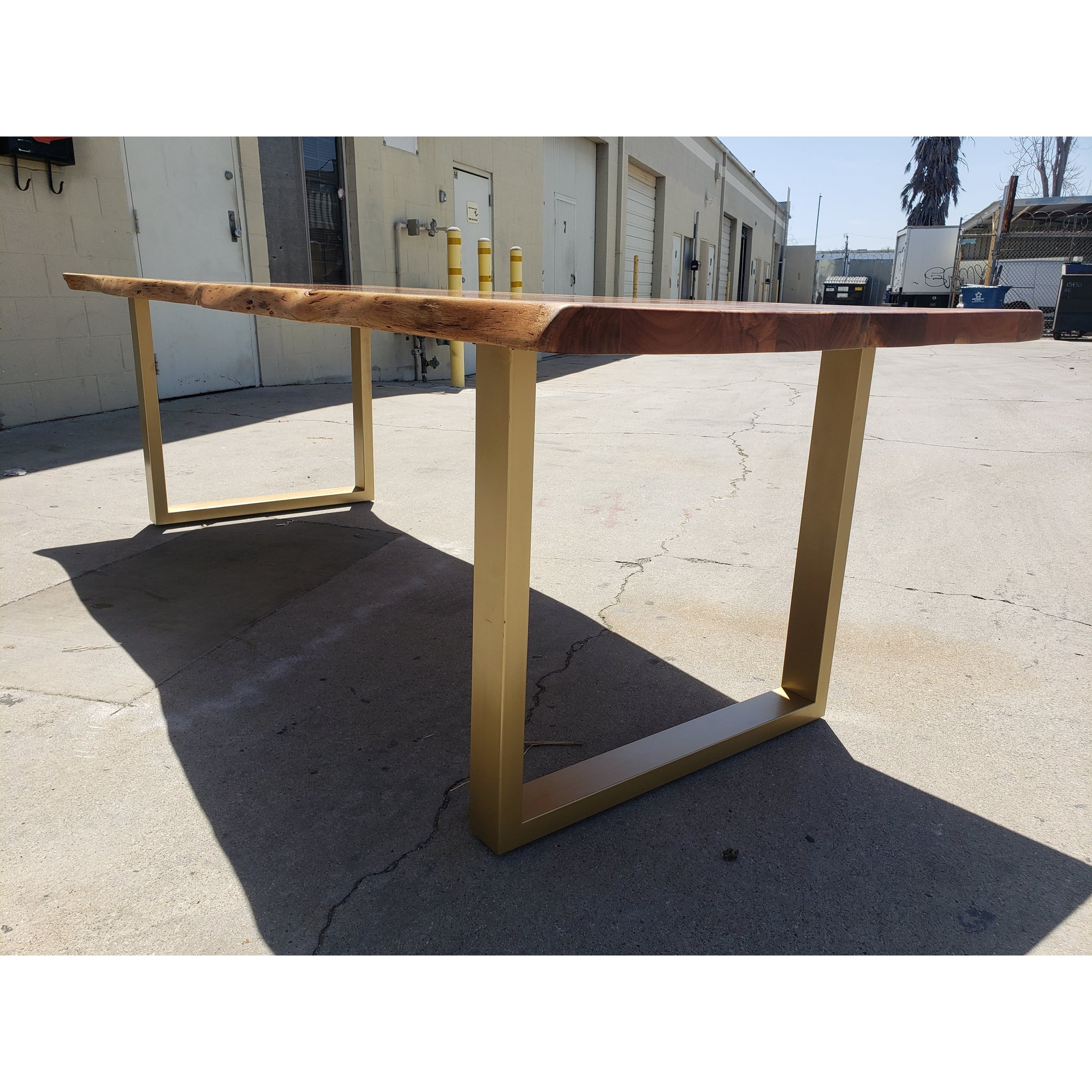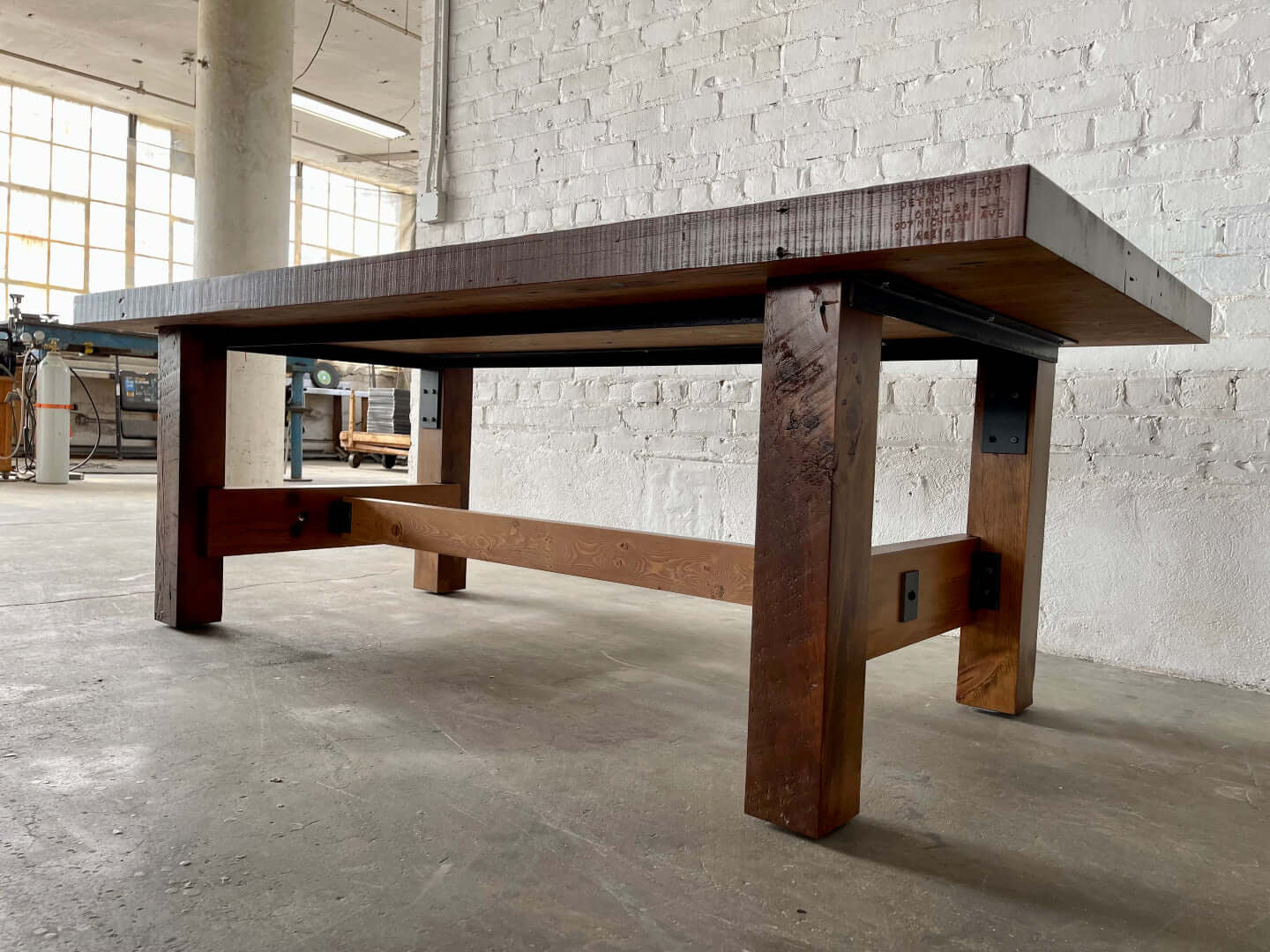Improve Your Dining Experience with Traditional Dining Table Legs Wood
Improve Your Dining Experience with Traditional Dining Table Legs Wood
Blog Article
What to Think About When Choosing Table Legs Wood for Your Home.
When selecting timber for eating table legs, numerous crucial elements call for mindful consideration to ensure both capability and visual charm. The type of wood chosen can dramatically influence the table's longevity, stability, and total style, while the maintenance demands might affect long-lasting use. In addition, the interplay of grain patterns and color with existing home furnishings can create a natural design. Comprehending these components is essential, yet lots of neglect the vital facet of monetary restraints. As we discover these factors to consider additionally, the implications of your selections may expose unexpected challenges and possibilities.

Significance of Wood Type
When choosing table legs, the option of timber type plays a crucial role in determining both looks and longevity. Different timber species provide differing levels of resistance, strength, and weight to put on, which can dramatically affect the capability and longevity of the table. Hardwoods such as cherry, oak, and maple are frequently chosen for their durable nature and ability to stand up to day-to-day use. These timbers not just supply architectural honesty however additionally withstand scrapes and dents much better than softer options.
Alternatively, softer woods like poplar or pine, while extra cost-effective, may not offer the very same level of resilience and might require even more constant upkeep or replacement. The timber kind additionally influences the table's capacity to sustain ecological elements such as moisture and temperature fluctuations. Additionally, the choice of wood can affect the simplicity of tarnishing and completing, which can be vital for accomplishing the preferred look.
Visual Considerations
The visual appeal of table legs dramatically contributes to the overall visual of the dining room. Dining Table Legs Wood. When choosing wood for eating table legs, the grain surface, pattern, and shade are essential aspects that can enhance or detract from the area's layout. Various timber kinds show differing colors and appearances; for example, oak offers a timeless look with prominent grain, while walnut provides an abundant, dark beauty
Furthermore, the shape of the legs plays a critical duty in specifying the table's character. Streamlined, minimalist legs can create a modern feeling, while more luxuriant, transformed legs stimulate conventional appeal. The design of the legs must harmonize with existing furnishings and the total style of the space, whether it be rustic, modern, or transitional.
It is likewise vital to take into consideration exactly how the legs connect with various other furniture pieces, consisting of chairs and sideboards. A cohesive design not just boosts the dining experience however likewise adds to the home's total aesthetic comprehensibility. Ultimately, the option of dining table legs must be a thoughtful choice that reflects individual preference while guaranteeing aesthetic consistency within the area.

Longevity and Stability
Toughness and security are important consider the option of table legs, as they directly affect the long life and safety of the furniture. When picking timber for eating table legs, one need to take into consideration the integral buildings of various timber kinds. Hardwoods, such as maple, cherry, and oak, are usually chosen for their stamina and resistance to put on, making them appropriate for high-traffic eating locations.
Along with the type of wood, the building and construction method likewise plays a substantial function in the general security of the table. Legs that are solidly constructed, either through standard joinery techniques or contemporary design methods, will supply superior assistance and stop tottering. It is vital to evaluate the density and design of the legs; thicker legs are generally a lot more secure and can withstand greater weight.
Furthermore, the environmental problems in which the dining table will certainly be used can influence toughness. Timber that has been appropriately dealt with for dampness resistance will certainly perform better in moist environments. Inevitably, picking the appropriate mix of sturdy timber and secure construction will ensure that your table remains a risk-free and functional focal point in your house for years to find.
Maintenance Needs
Picking table legs made from long lasting timber is simply the start; recognizing maintenance demands is just as important to maintain their appearance and functionality. Various wood types need varying degrees of treatment, so it is important to know what is needed for your specific selection.
Routine cleaning is essential; use a soft, moist fabric to remove dirt and particles. Stay clear of severe chemicals that can damage the finish. For timber surfaces like varnish or lacquer, regular brightening with furniture wax can boost luster and give a protective layer versus scratches.
Preventative procedures are critical (Dining Table Legs Wood). Usage rollercoasters and placemats to avoid direct call with warm or wet items, which can warp or tarnish the wood. Furthermore, consider placing felt pads under the legs to stop scrapes on your flooring and minimize endure the wood
Humidity control is one more significant element; keeping a secure atmosphere assists to stop bending and fracturing. If your dining location is prone to variations in temperature and wetness, take into consideration using a humidifier or dehumidifier as required.
Spending Plan and Expense Factors
When preparing to purchase table legs, understanding budget plan and price aspects is important to make an educated choice. The type of wood selected for the legs considerably affects the visit the site total price. Hardwoods, such as oak or walnut, tend to be extra costly than softwoods like yearn, due to their longevity, aesthetic allure, and scarcity. Furthermore, think about whether you are acquiring pre-made legs or choosing for personalized layouts, as modification often sustains greater prices.
Labor and workmanship likewise play a crucial function in the general expenditure. Handmade or artisan-crafted legs may bring a costs cost tag, showing the skill and time bought their development. It's essential to evaluate the balance between quality and expense; spending more ahead of time can cause a longer-lasting product that needs less maintenance in time.
Conclusion
In recap, choosing the proper timber for eating table legs requires mindful consideration of numerous factors, consisting of wood type, visual allure, sturdiness, budget plan, and upkeep constraints. The option of woods such as oak and maple can enhance both stamina and aesthetic charm, while softer timbers may be much more cost-effective yet much less enduring. Eventually, a well-informed decision relating to material selection will from this source certainly add to the overall performance and long life of the dining table, making sure a beneficial investment for the home.
When selecting timber for eating table legs, numerous essential elements require cautious factor to consider to guarantee both performance and aesthetic appeal.When selecting eating table legs, the option of wood type plays an important function in establishing both appearances and sturdiness. When picking wood for eating table legs, the grain surface, pattern, and color are essential elements that can take away or enhance from the room's layout. When selecting timber for dining table legs, one must think about the fundamental residential properties of various timber kinds.In summary, picking the proper timber for eating table legs requires careful consideration of numerous factors, consisting of timber type, aesthetic appeal, sturdiness, upkeep, and budget go to this web-site restrictions.
Report this page